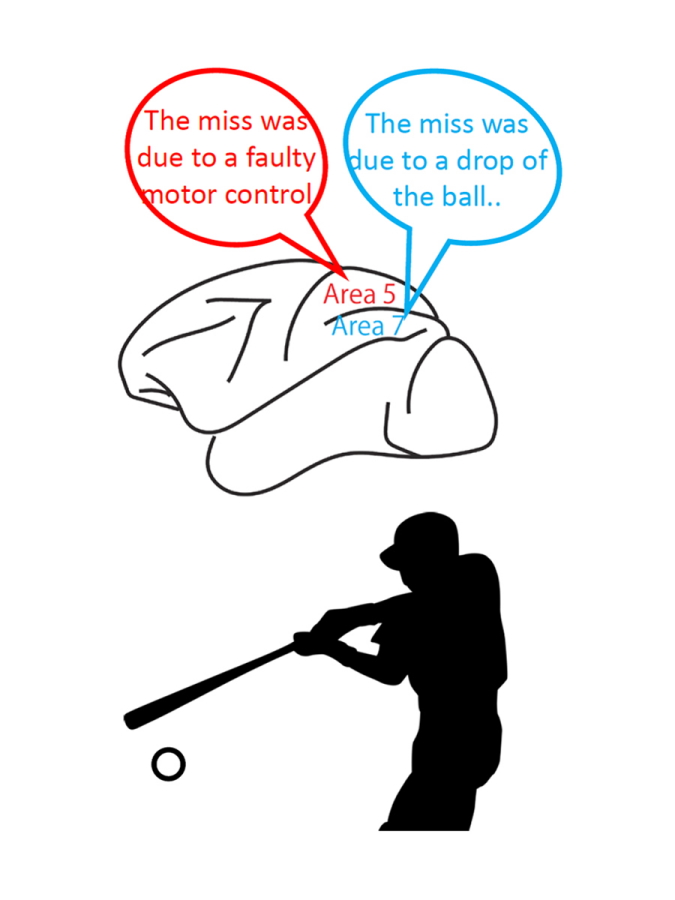Motor error in parietal area 5 and target error in area 7 drive distinctive adaptation in reaching
| Journal | Curr Biol, 28(14):2250-2262.e3. (2018) |
|---|---|
| Title | Motor error in parietal area 5 and target error in area 7 drive distinctive adaptation in reaching |
| Laboratory | Dynamic Brain Network Laboratory〈Prof. KITAZAWA Shigeru〉 |
Abstract
Errors in reaching drive trial-by-trial adaptation to compensate for the error. Parietal association areas are implicated in error coding, but whether the parietal error signals directly drive adaptation remains unknown. We first examined the activity of neurons in areas 5 and 7 while two monkeys performed rapid target reaching to clarify whether and how the parietal error signals drive adaptation in reaching. We introduced random errors using a motor-driven prism device to augment random motor errors in reaching. Neurons in both regions encoded information on the target position prior to reaching and information on the motor error after reaching. However, post-movement microstimulation caused trial-by-trial adaptation to cancel the motor error only when it was delivered to area 5. By contrast, stimulation to area 7 caused trial-by-trial adaptation so that the reaching endpoint was adjusted toward the target position. We further hypothesized that area 7 would encode target error that is caused by a target jump during the reach, and our results support this hypothesis. Area 7 neurons encoded target error information, but area 5 neurons did not encode this information. These results suggest that area 5 provides signals for adapting to motor errors and that area 7 provides signals to adapt to target errors.

Who is responsible for the miss swing? Myself, or the ball?
| Authors | Masato Inoue M (1), Shigeru Kitazawa (1, 2, 3)
|
|---|---|
| PubMed | 29983313 |
